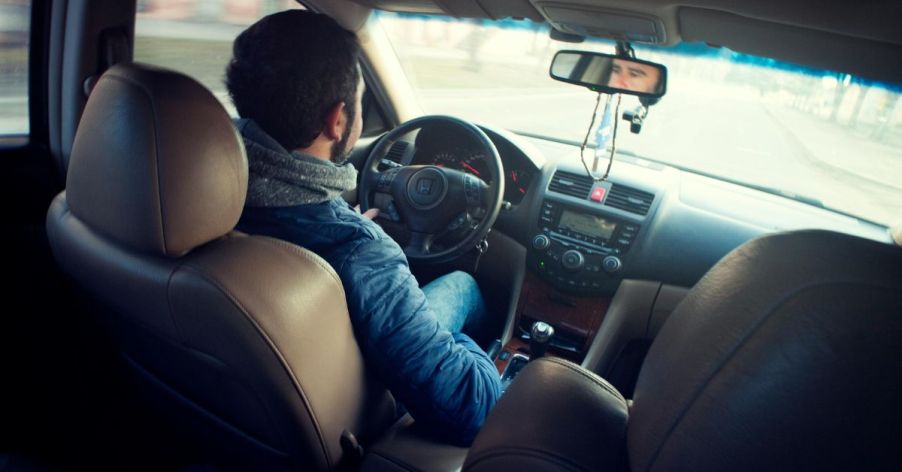
15 Common Manual Car Driving Mistakes You Should Avoid

Driving a manual car gives you greater control over the vehicle and a deeper connection with the road. However, it also comes with some challenges, especially for those who have yet to master the finer points of gear shifting. Here are 15 common mistakes manual drivers make and how to avoid them.
Riding the Clutch

A common mistake, often known as “riding the clutch,” can cause significant damage over time. When the clutch is partially engaged, unnecessary friction is created, which causes faster wear of the clutch plate. This habit can also cause the system to overheat.
Shifting at Low RPM

Changing gears at too low an RPM can strain the engine and cause it to underperform. When you shift early, the engine doesn’t generate enough power to maintain momentum, resulting in poor acceleration. Consistently driving like this also increases fuel consumption.
Skipping Gears

While it might seem efficient to skip gears, like going directly from second to fourth, the practice can disrupt power flow and cause uneven wear. Each gear can perfectly fit only a specific range of speed and power, so skipping them keeps the engine from operating within its ideal range.
Resting Your Hand on the Gearstick

This seemingly harmless action can cause unintended pressure on the gear selector forks inside the transmission, which can wear and damage them over time. You should only use the gear stick when shifting gears and keeping both hands on the steering brings better control.
Holding the Clutch at Traffic Lights

Some drivers keep the clutch engaged while waiting at traffic lights, thinking it will allow them to get going faster when the light turns green. However, this wears the clutch and its components. It’s best to shift into neutral and release the clutch while waiting.
Downshifting to Slow Down

It’s a mistake to slow down by downshifting instead of using the brakes. While this can be helpful in certain situations, over-relying on engine braking can prematurely wear out the clutch and transmission. Using the brakes for deceleration is better.
Not Fully Depressing the Clutch

Failing to fully press the clutch pedal when changing gears can cause a grinding noise and damage the transmission. This happens because the gears aren’t fully disengaged. To prevent this, always make sure to floor the clutch when shifting.
Coasting in Neutral

Although some drivers believe coasting in neutral saves fuel, it can be dangerous. When in neutral, you lose engine braking, which makes it harder to control the vehicle. Modern cars are designed to cut off fuel to the engine while decelerating in gear, so coasting doesn’t save fuel.
Riding the Brakes on Hills

Some people prefer riding the brakes when driving a manual car downhill. This causes the brakes to overheat, lose effectiveness, and damage. Instead, you should downshift to let engine braking assist with controlling your speed, reducing the need to rely solely on the brakes.
Holding the Car on an Incline Using the Clutch

When driving a manual car uphill, some drivers hold the car on the incline by balancing the clutch and throttle instead of using the brake. It creates excessive wear on the clutch, which can overheat and cause premature failure.
Revving the Engine Before Releasing the Clutch

Revving the engine too high before you release the clutch can damage it as it generates heat and friction between the clutch disc and flywheel. Instead, match the engine’s RPM with the amount of throttle needed for a smooth start without over-revving.
Shifting Gears Too Aggressively

Aggressively shifting gears doesn’t improve performance. Instead, harsh gear shifts can damage the synchronizers and gears inside the transmission and lead to costly repairs. Smooth and deliberate shifting preserves the transmission while allowing you more comfort and control.
Not Matching RPM When Downshifting

Some users fail to match the engine RPM to the lower gear when downshifting, which can cause the car to jolt. This is known as “engine lugging,” which puts unnecessary strain on the engine and transmission. To downshift smoothly, try rev-matching, where you increase the engine RPM slightly.
Holding the Clutch in While Cornering

Another common mistake is holding the clutch down while taking a corner. Doing this disconnects the engine from the wheels, reducing traction and control. This is a safer and more effective to downshift before entering the corner to help maintain speed and stability.
Accelerating in the Wrong Gear

Accelerating in too high a gear can lead to engine lugging, where the engine struggles to provide enough power. It can also cause the engine to vibrate and work harder than necessary, which may lead to lower fuel efficiency and long-term damage.


